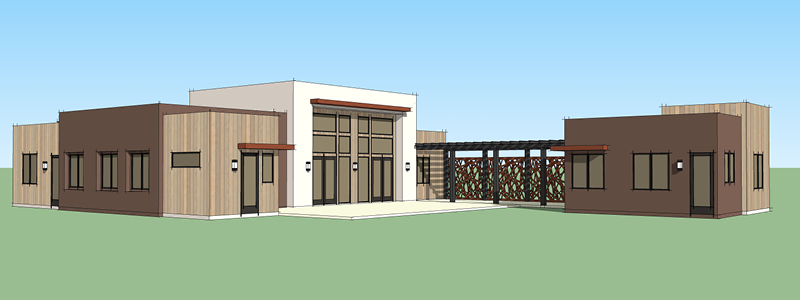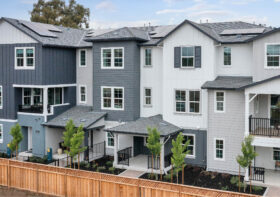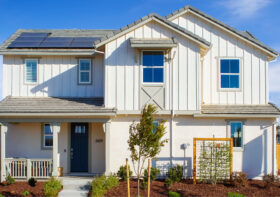A New Self-Contained Power Grid Community Coming to Lancaster
In 2020, WHA was approached by BRIDGE Housing to partner on an RFP in the city of Lancaster, CA. The site, known as HNR-1, is a narrow strip of land wedged between an existing single-family neighborhood and a main thoroughfare that runs through the city from east to west. The city had developed working drawings for (78) two-story duplex homes but was looking for high-quality rental housing opportunities that served the “missing middle” of the area – those earning at or below 60% of AMI.
Through the design process, the WHA team sought to maximize efficiency and livability, ending up with a solution that had smaller-scaled two-story buildings, with 114 homes framing a central paseo and green space that ran the length of the site. The proposal included a mix of townhomes and flats, as well as quality amenity spaces throughout.

After winning the RFP and moving into the entitlement process, the next challenge presented itself – ensuring the site and building designs would support an innovative technology known as a microgrid. Envisioned as a self-contained power grid, the buildings would have solar energy production, battery storage, and distribution all on site while being tied to the local power grid for reserve needs. However, this system created a new set of constraints that had to be solved. Simply put, there were too many separate buildings, each requiring their own individual connection to the microgrid system. The design was then altered by limiting the different building types on the site and combining some buildings to reduce their total numbers from 36 to 17, while maintaining the original aesthetic, massing, scale, and walkable nature. These simplified building types and forms both increased the overall efficiency of the community and allowed for greater roof area for solar panels without sacrificing the design intent.

None of this would have been possible without the incredible collaborative efforts of all parties involved: from the client to the architect, to the various consultants, and various city agencies, many of whom have been involved since the project’s conception. While several steps occurred substantially earlier than they would in a more typical design process, the innovative response to constraints molded HNR-1 into what it is today, and what it will be: a landmark community that sets the standard for affordable housing in California.
Read a related article written by Ron Nestor for Green Home Builder about this community here: A Bridge to the Future in Affordable Housing
*This blog was co-written by Louisa Feletto and Connor Chelwick*




Leave a Reply